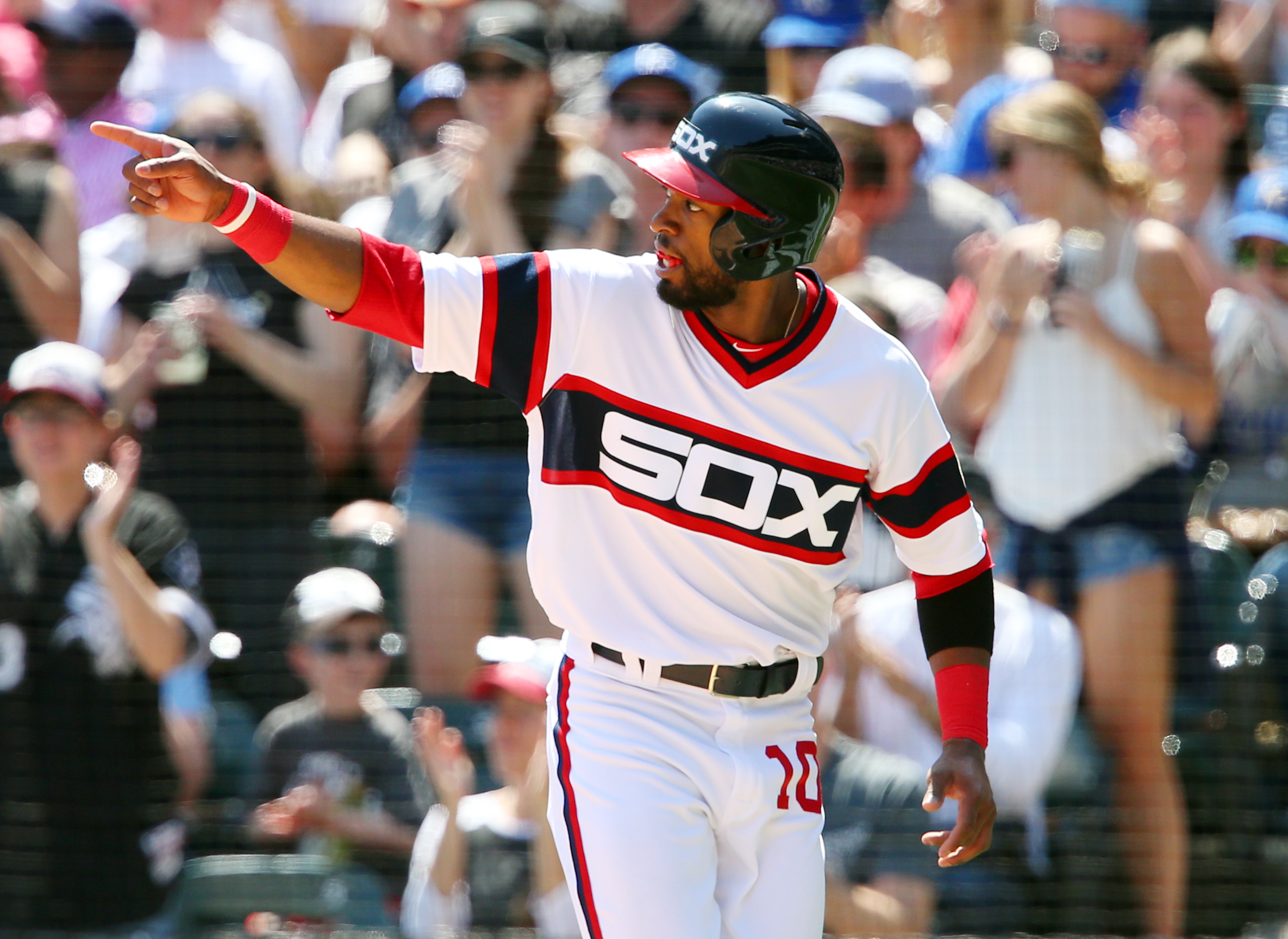Last offseason this website, in its past and current form, and seemingly everyone with a vested interest in the success of the White Sox, whether with a pen or keyboard, or just by speaking out loud were joined together in one common refrain:
SIGN AN OUTFIELDER!
This line of thought was logical. It was commonly known that the White Sox would go into 2016 with Adam Eaton and Melky Cabrera at two of the three outfield positions, but the third was presumably up for grabs after a season’s worth of tape watching Avisail Garcia embarrass himself out there.
What’s more, the free agent market included a plethora of outfield options. Even once you got past the big money guys — Yoenis Cespedes, Justin Upton, Jason Heyward, Alex Gordon — there were other options, all of whom would have been major upgrades over Garcia.
As you know by now, the White Sox went cheap. The only free agent outfielder they signed was Austin Jackson, who they inked to a one-year, $5 million deal well after the cold, dark winter, when Spring Training was already in full swing.
Signing Jackson is a fine idea in some respects. He’s the type of player good teams acquire as depth. It’s when you’re relying on him as an everyday player with no backup plan that you run into trouble, and that’s exactly what the White Sox did.
Jackson hit .254/.318/.343 in 203 plate appearances with the White Sox in 2016 before a torn meniscus in early June–that was supposed to keep him out for six weeks–ended his season.
During his two months of action, Jackson did provide something the White Sox had been missing: A huge defensive upgrade. Installing Jackson in center field and moving Eaton to right gave the White Sox plus defense at two outfield positions, whereas the former Cabrera-Eaton-Garcia outfield gave them one average defender sandwiched between a pair that patrolled the outfield like they were running through an obstacle course in quicksand.
Let’s be clear: The loss of Jackson didn’t sink the White Sox. Nick Schaefer pointed out last month how teams like the Indians and Mets were able to survive despite key losses throughout the season, so it would be preposterous to assume an injury to a glove-only center fielder would sink a team’s chances at contention. But with the Sox lack of depth, it certainly didn’t help.
When Jackson went down, his spot in the lineup and outfield was filled by a number of guys, none of whom were able to provide anything more than replacement-level work.
J.B. Shuck, the most familiar of the bunch after performing commendably in part-time duty in 2015, was considerably below average in every aspect in 2016, hitting .205/.248/.299 in 241 plate appearances and fumbling around defensively in center field. He was the only one of Jackson’s non-September call-up replacements the Sox even attempted to play in center, and was worth -1.4 WARP.
Jerry Sands was around for a while, too, hitting to the tune of .236/.276/.291 in 58 plate appearances. He had three walks and 24 strikeouts and was borderline worse in the field than Garcia, which is difficult to imagine.
The last of the replacement options was Jason Coats, who burst onto the radar with a hot start to the minor league season in Triple-A Charlotte. The former 29th round pick, who was never thought of by most as any sort of legitimate prospect, finally made his debut at the age of 26 and hit .200/.298/.340 in 58 plate appearances.
Nobody expected the likes of Shuck, Sands or Coats to hit like Eaton or field like Jackson. Each is the epitome of “replacement-level player.” But the White Sox inability to plug holes with system depth has been apparent for a while now, and the revolving door in the outfield in 2016 was yet another example of that.
Lead Photo Credit: Jerry Lai-USA TODAY Sports
